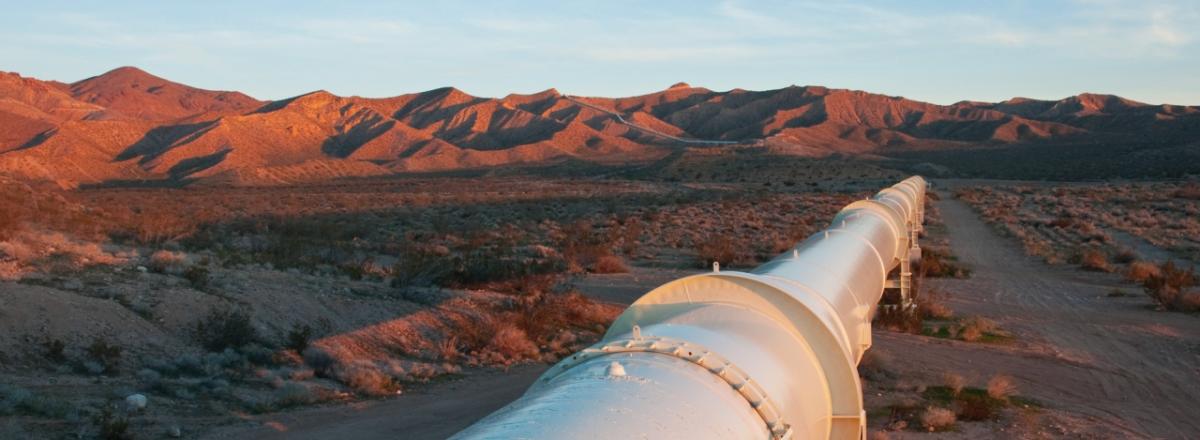Balancing Action With Affordability in Water Infrastructure Development
The Bipartisan Infrastructure Law creates expanded funding opportunities for water utilities to significantly improve operations … provided the right criteria are addressed.
As water becomes an increasingly scarce resource in California and across the United States, water and wastewater infrastructure owners are being pushed to explore more expensive sources, while keeping rates as low as possible for consumers.
With most of the easier or cheaper options already attempted or used, this task has proven to be a formidable challenge for owners.
Differential rates – charging rates based on one’s ability to pay – are not always an option and owners must evaluate the impacts to all ratepayers and find the best option possible for all consumers.
“Owners will tend to study projects at length to ensure that they are not spending more than they need,” said Juan Diaz-Carreras, Southern California/Nevada District water business leader at WSP. “Traditionally owners have put off rate increases as long as possible until forced to act.”
That delay can have consequences, including degradation of service or legal action from regulatory bodies. If the consequences are severe, resolution usually outweighs the desire to keep rates low, and unless there is financial relief provided by elected officials to mitigate the increase for consumer, these changes likely lead to higher rates.
Today the Infrastructure Investment and Jobs Act (IIJA), also known as the Bipartisan Infrastructure Law, has upended some of those traditional approaches and limitations, as water utilities are seeing possibilities for more available funding that can help leverage existing resources.
The Water Infrastructure Finance and Innovation Act (WIFIA), other programs including the EPA-funded and state-administered state revolving fund (SRF) programs are also providing options. Additionally, SRF has now been directed to provide “loan forgiveness” in the IIJA, essentially transforming it into a partial grant program in certain cases.
Scope, Readiness, Environment
Today, owners need to think creatively about how they fund projects and look beyond traditional sources and local resources.
Water infrastructure owners should focus their request on addressing three key areas that will determine which projects officials consider the best positioned to deserve funding: scope, readiness and environmental concerns. In addition, the IIJA puts equity front and center, with certain funding programs directed towards historically underserved communities.
“Funding agencies are looking for multi-benefit projects — creative approaches can really help,” Diaz-Carreras said. “Looking at the scopes of projects, pieces can be added or modified to make the project eligible for different categories of funding. While you are replacing that water line, it might be possible to explore if funding is available to install a green street, cool pavement, or lead pipe replacement. If those projects have money coming to them, why not maximize your project’s potential?”
Regardless of the funding source, owners should follow a few key steps early in the process:
- understand the criteria and adapt projects to how applications will be scored;
- talk to the funding agencies beforehand to better understand the criteria, the funding process and, if the opportunity presents itself, explain your situation to help them understand your biggest challenges and encourage them to frame the regulations in a way that will lead to you providing improved services;
- start the application process early, before funding notices are available and competition expands; and
- contact your congressional delegation for help connecting with federal agencies and writing letters of support that can be included in funding applications.
Consider the Underserved
It is also critical to initiate proactive engagement with the community before applying for funding.
“All funding program officials want to know that the community supports a project, and most will explicitly ask for this information as evidence to support your request,” Diaz-Carreras said. “As you engage, you will also likely learn of the specific needs of your communities, possibly leading to scope ‘tweaks’ that will make your project more accepted, as well as more eligible for funding.”
The IIJA also makes a specific case for getting projects to underserved communities and this aspect is increasingly desired in most funding programs.
Infrastructure owners should be openly and honestly answering many questions about their operations:
- Where has there been historic underinvestment in the community?
- How can our agency engage with those communities to understand their needs and adapt projects to address those needs?
- Can elected officials serve as a liaison to connect with leaders in the community to begin the engagement and understand those needs?
“First and foremost, involving underserved communities in the process is the right thing to do,” Diaz-Carreras said. “Consideration of disadvantaged communities has taken on an even greater significance. But community engagement need not be complex or scary. Just starting the conversations – mostly listening – will be the first step toward understanding the biggest needs and can guide what you will want to incorporate into your plans."
Future Focus
Funding agencies want to know that the projects being funded will work and provide the benefits being promised. It is important to make the case not only for the individual project or projects in your application, but also for how the completed project will interact with existing and future infrastructure to accrue benefits to the community.
“You need to make the case for the existing and future context of the needs of your community and demonstrate how the existing infrastructure is going to fall short of addressing those needs, and how your project will provide solutions,” Diaz-Carreras said. “And yes, every project needs to be examined through an equity lens.”
Funding agencies want to know projects meet or exceed goals for benefits to disadvantaged communities. If a project disproportionately affects one community without benefits that offset impacts, the project will have difficulty moving forward.
Lastly, sometimes a challenge could present an opportunity for ancillary community benefits.
“If you have to disturb a park or other open space for your project, perhaps you can propose improvements to those areas as part of the restoration process,” he said. “If you are digging up a street, can you make improvements to traffic flow during the rebuild? These ancillary benefits will make projects more attractive to funding agencies and the community.”
Diaz-Carreras and WSP have already been helping forward-thinking water infrastructure owners analyze the benefits of projects and adapt them so that the benefits more closely mirror the funding criteria in preparation for their major improvement projects, as well as mitigate project impacts and shape projects that will address critical community needs.
“It has been invigorating to help WSP clients think holistically about their projects, explore what the needs are, examine potential impacts on the community, and identify the best strategies to acquire funding and ensure projects are accepted and desired,” Diaz-Carreras said. “They are starting to realize that what is possible now often extends beyond what they originally envisioned.”
[To subscribe to Insights, contact the editorial staff at insights@wsp.com.]




